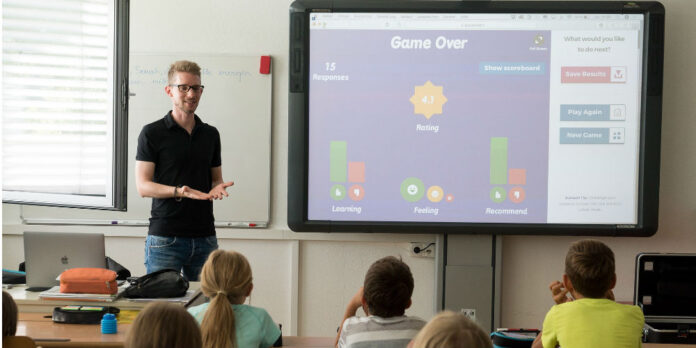Thanks to the Internet and ever-evolving technology, learning has become more dynamic, engaging, inspiring, and convenient. Education is no longer just based on textbooks and classrooms; it has evolved into a technology hybrid, innovative learning, and digital information. The Internet has grown significantly more affordable and accessible, resulting in a greater convergence of digital and traditional teaching approaches. But still, many students don’t have access to this quality of education because their ratio must be small, but they are worth considering. For instance, in Nigeria, there are more limited electricity and fewer connectivity problems (Olanrewaju, Adebayo, Omotosho, Olajide, 2024).
To enable everyone to get access to this quality of education, efforts need to be made to improve the circumstances for the less privileged. Digital education, like many other industries, will see significant changes in the way educational institutions operate shortly. However, digital education has some undeniable importance and advantages for those accessing it. But what are those factors which are contributing to this divide? And how can they be overcome? Let’s have a close look at that.
The Importance of Digital Transformation in Education

People will require the appropriate digital education to succeed in their future employment. Whether in school, university, or the workplace, the ongoing digital change makes IT skills increasingly crucial. The future seems to be full of digital opportunities. What aspect of our life is not affected by digital technologies? Everything is going digital. Even the business of real estate is going digital with the metaverse.
Students who do not have enough access can’t even take the basic facilities like dissertation writing service or help in their research project. Students need to be familiar with these technologies to build an advanced future. And to help the less privileged students to run the race with the world, strategies need to be implemented.
The Advantages of Digital Education

- Personalized Learning Experience: Teachers can tailor study materials to each student’s learning speed and ability thanks to the modern digital format. With the digitalization of the education system, educational programs have a greater impact.
- Smart Learning: Students gain good self-directed learning skills when exposed to new learning tools and technologies. It has a tremendous impact on their productivity, learning ability, and efficiency.
- A Plethora Of Information: The Internet has a large amount of information, the majority of which is freely available. Students may now explore and apply this wealth of knowledge thanks to the advent of digital schooling.
- Smart Classrooms: Modern classrooms are equipped with a television or a projector, making it simple to go from a traditional classroom to an interactive digital session. Because they are so familiar with the digital environment, this may cause pupils to pay greater attention.
- A Sense Of Accountability In Students: It allows students to examine their performance and develop necessary solutions on their own. Students emerge from their shells as independent thinkers who know what to study, when to study, and how to study due to the digital education system. They are no longer reliant on their instructors and parents to provide information on a silver platter.
Factors Causing Barriers to Digital Exposure

- Education: People with less education have difficulty digital exposure due to less knowledge about the technology. Households with increasing levels of education, that is, college or university, tend to have more usage of computers and the Internet than households with less education.
- Less Access To Devices Due To Less Income: Just like education, less income also plays a significant role in access to technology. Households with decent income tend to have more home internet access than those at lower income levels. It does also depend upon the households-based in city or rural areas. People living in cities have more internet access than people living in rural areas because of limited or no electricity or connectivity issues.
- Race: Simultaneously, the digital divide is widening along specific racial lines. Surprisingly, race impacts the number of computers in the school. Schools with a higher minority population have fewer computers, whereas schools with a smaller minority population have more computers.
What Must Take Place?

To eliminate this divide of digital transformation in education, it is important to take considerable measures to make students able to get at least basic facilities or any other place. Aside from the obvious financial barriers, the following would help narrow the gap to provide such ease of access.
- Accessibility For All: As the number of people who use computers and the Internet grows, the demand for access increases. Policymakers and community members in the public sector must recognize the value of such resources and take steps to guarantee that everyone has access to them.
- More Community Access Centers Are Needed And Continued Support For Those That Already Exist: Community access centers (CACs) are an important resource for persons who do not have access to computers or the Internet at school or work; funding for these programs should be maintained to grow and develop them.
- Additional, Well-Trained Technical Personnel Are Needed: Computers and other technologies are insufficient on their own. To promote the greatest use of resources, communities and schools must train and retain additional, more qualified people and use new technologies.
- The Public’s Attitude Towards Technology Is Shifting: Simultaneously, much of society must modify its attitude toward technology. Instead of seeing computers and the Internet as frills, people should see them as necessary.
Final Thoughts
Technology has taken many industries by storm, just like the business needs every new invention to run in the race with the other competitive industries. Students also need access to all the necessities such as zoom, making it possible to connect the students and teachers in no time.








